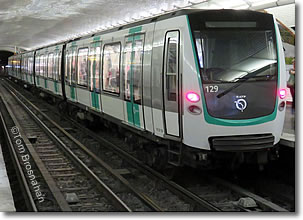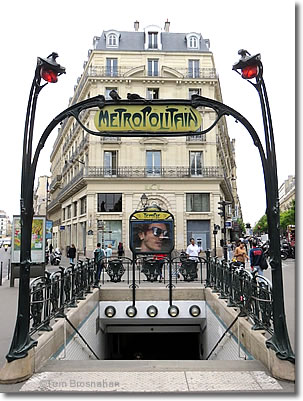 |
Paris Métro Guide | |
| The best way to see Paris is on foot, but when you must ride, use the RATP Métro. | ||
|
|
||
|
|
|
For price and convenience, the Paris Métro operated by RATP can't be beat. It has 300+ stations throughout the city, so there is bound to be a Métro station near where you want to go. RATP buses are useful for some trips, but they depart stops less frequently than Métro trains, and are subject to thronged Paris traffic. Here's a map of the Paris Métro. Get the App!Here's the highly useful RATP smartphone app,Bonjour RATP, free for Apple iOS and Google Android. More... Here's what the Meetro it costs, and how to save money buying tickets. Métro stations are marked by a variety of signs, including "M," "Métro," and ones reading Metropolitain. The trains run from 5:30 am to past midnight (24:00), finishing up their final runs after 01:00 am. Riding the MétroOn most journeys, you will have to change lines at least once. Even if you have to change twice, trains arrive and depart so frequently (about every 3 to 8 minutes), and operate so fast, that this is not a hindrance, although the walk between ltrain platforms can be long—even five or ten minutes—in some large stations such as Châtelet, the largest subway station in Europe, with 19 Sorties (exits). 10 Steps to a Perfect Métro TripBoarding the Métro train is the easy part. Planning your walking is the secret to not getting confused or lost on the Paris Métro. Here's exactly how to do it. More... Handicapped &
|
|
 |
Temple station on Line 3, with its original Hector Guimard Art Nouveau gate and surround (early 1900s).


